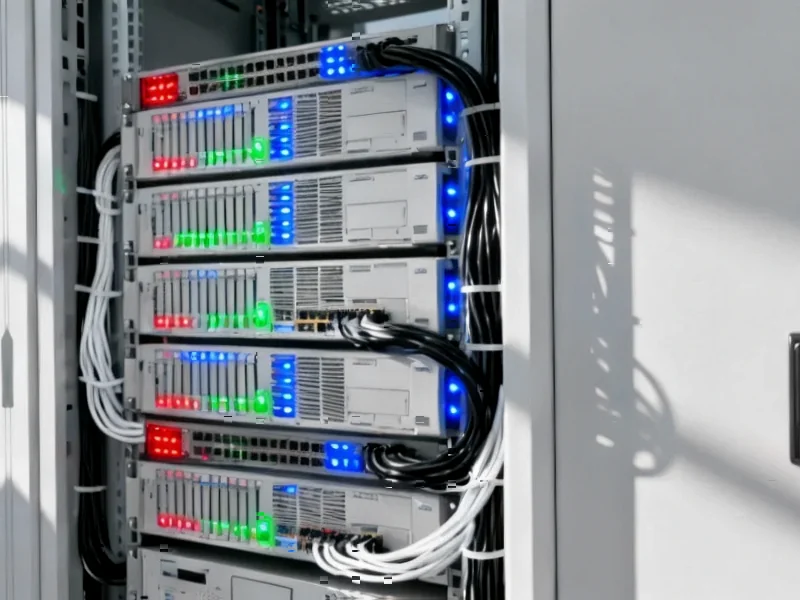According to Windows Report | Error-free Tech Life, Microsoft has signed a massive $9.7 billion deal with data center operator IREN to access NVIDIA’s cutting-edge GB300 chips through a five-year agreement. The deal gives Microsoft access to IREN’s vast data center network across North America with nearly 3,000 megawatts of total capacity, allowing the tech giant to scale AI services without building new facilities. IREN will deploy the new NVIDIA processors in phases through 2026, starting with its 750-megawatt Childress, Texas campus, which will feature liquid-cooled data centers capable of delivering 200 megawatts of critical IT power. Microsoft’s prepayment will help finance IREN’s $5.8 billion deal with Dell, while the tech giant also confirmed a separate multibillion-dollar agreement with AI cloud startup Lambda for NVIDIA-backed infrastructure. This strategic move reflects Microsoft’s commitment to staying competitive in the escalating AI compute race.
The Infrastructure-as-a-Service Revolution in AI
Microsoft’s deal with IREN represents a fundamental shift in how tech giants are approaching AI infrastructure. Rather than continuing the capital-intensive approach of building and operating their own data centers, companies are increasingly turning to specialized infrastructure providers who can deliver compute capacity on demand. This mirrors the early cloud computing revolution where companies realized it was more efficient to rent computing resources than own them outright. The scale of these agreements demonstrates that we’re entering an era where AI infrastructure itself becomes a strategic asset that can be leased rather than exclusively owned.
Winners and Losers in the AI Infrastructure Ecosystem
This deal creates clear winners beyond just Microsoft and IREN. NVIDIA continues to dominate as the essential hardware provider, with their GB300 chips becoming the gold standard for advanced AI workloads. Data center operators with available capacity and power access suddenly find themselves in an incredibly strong negotiating position. Meanwhile, traditional cloud providers who haven’t secured similar partnerships risk falling behind in the AI arms race. The losers in this equation may be smaller AI companies who now face even steeper competition for limited compute resources, potentially driving up costs and creating a two-tier AI market where only well-funded players can access the most advanced infrastructure.
The Hidden Bottleneck: Power Availability
What makes this deal particularly significant is the focus on power capacity rather than just compute. IREN’s nearly 3,000 megawatts of total capacity represents a strategic asset that’s becoming increasingly scarce. Advanced AI models require enormous amounts of electricity, and many regions are facing constraints on power grid capacity. Microsoft’s approach acknowledges that the real bottleneck in AI scaling isn’t just chips or data center space—it’s access to reliable, scalable power. This trend will likely accelerate as companies compete for limited power resources in strategic locations, potentially reshaping energy markets and driving investment in new power generation specifically for AI workloads.
Ripple Effects Across the Technology Ecosystem
The implications of this deal extend far beyond Microsoft’s immediate AI capabilities. We’re likely to see increased consolidation among data center operators as scale becomes critical for negotiating these mega-deals. The $5.8 billion Dell component suggests that hardware manufacturers will benefit from this infrastructure arms race, though they face pressure to deliver increasingly specialized equipment for AI workloads. For customers, this could mean both better AI services and potentially higher costs as infrastructure investments get passed through. The most interesting development will be whether this model creates sustainable competitive advantages or simply raises the entry barrier for everyone in the AI space.
The Coming Infrastructure Gold Rush
Looking ahead, Microsoft’s dual deals with IREN and Lambda signal the beginning of an infrastructure gold rush. We can expect other tech giants to pursue similar partnerships, potentially creating a new class of infrastructure-as-a-service providers specifically for AI workloads. The real test will be whether these arrangements can scale efficiently as AI model complexity continues to increase exponentially. Companies that locked in favorable terms early may gain significant cost advantages, while latecomers could face capacity constraints and premium pricing. What’s clear is that the battle for AI supremacy is increasingly being fought at the infrastructure level, and partnerships like this $9.7 billion deal are becoming the new front line.




